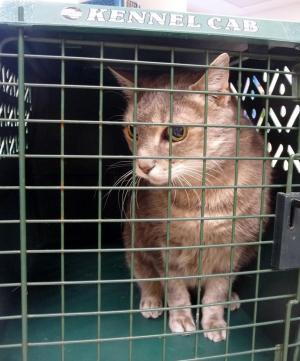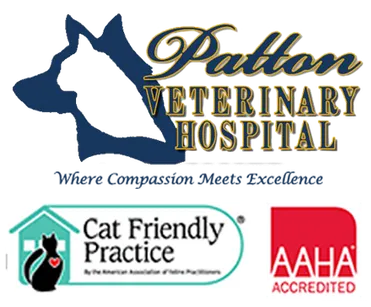Making a Visit to the Vet Easier for Your Cat
- posted: Sep. 02, 2017
 How Can I Make my Cat’s Trip to the Veterinary Office Go More Smoothly?
How Can I Make my Cat’s Trip to the Veterinary Office Go More Smoothly?
Cat are very curious animals by nature. They are also very quick to pick up on visual and behavioral cues. Clients often say that their cat “just knows” when they think about going to the vet. In some ways, this is very true. So, let’s break down the barriers that are making it so difficult to travel with our feline friends.
The carrier is the first big hurdle. The carrier is often only brought out when the cat is going to be placed in it quickly, go on a nauseating car ride, and then be touched by strangers. Step one is to make sure the carrier is of appropriate size for the cat to be able to turn around and lay down. Keep in mind this is just for short trips. Step two: Shop for the right carrier. There are many carriers that easily come apart--the top opens, they have multiple doors, etc.--as well as have structural support. These options will not only help us to remove your cat after getting to the hospital, but also help you to get your cat into the carrier. Step three is to acclimate your cat to the carrier at a time when he is not expected to stay in the carrier.
Counter-conditioning your cat to the carrier is important and can include the following: Feeding food or treats and putting soft bedding and toys in the carrier can help entice them to explore, keeping the carrier out in an accessible area so that the cat has the option to choose it as an area to play or sleep, and taking the top off or opening/removing doors is helpful so that they do not feel trapped.
The day of the appointment, it is very important to do things the way you normally would. That being said there are a couple tricks of the trade we would like to share with you. For the food motivated cats, it is sometimes easier to schedule your appointments around the feeding schedule since you know your feline friend will be present and waiting. If your cat gets car sick you may not want to feed them for a period of time leading up until your appointment or use an anti-nausea medication. This is best determined by discussing it with the staff. Overly anxious or scared cats may benefit from a “Kitty Glad Pack”, a combination of two medications to help calm anxiety and lower stress levels related to the trip and the visit.
When placing your feline friend in the carrier it is best accomplished by enticing them to enter willingly. If that is not possible, you can place a towel over their body and lift them into the bottom of the carrier, then put the top back on and make sure the door is attached. The towel can be left in the carrier for comfort, just make sure to uncover the cat’s head and ensure they are not wrapped up in it. The car ride itself should be somewhat silent. Play low, calming music in the background and try not to over-talk. We often try to talk to them when we are feeling nervous and they can sense that. The carriers come equipped with handles that are great, but there is a lot less movement for the cat if we support the carrier from underneath with two hands and hold it up against our body as much as possible.
Hopefully, these tips will make it a little easier the next time your cat needs to visit us!
--by Krista Harbold, CVT
This blog brought to you by the Patton Veterinary Hospital serving Red Lion, York and the surrounding communities.
Location
Patton Veterinary Hospital
425 E Broadway
Red Lion, PA 17356
